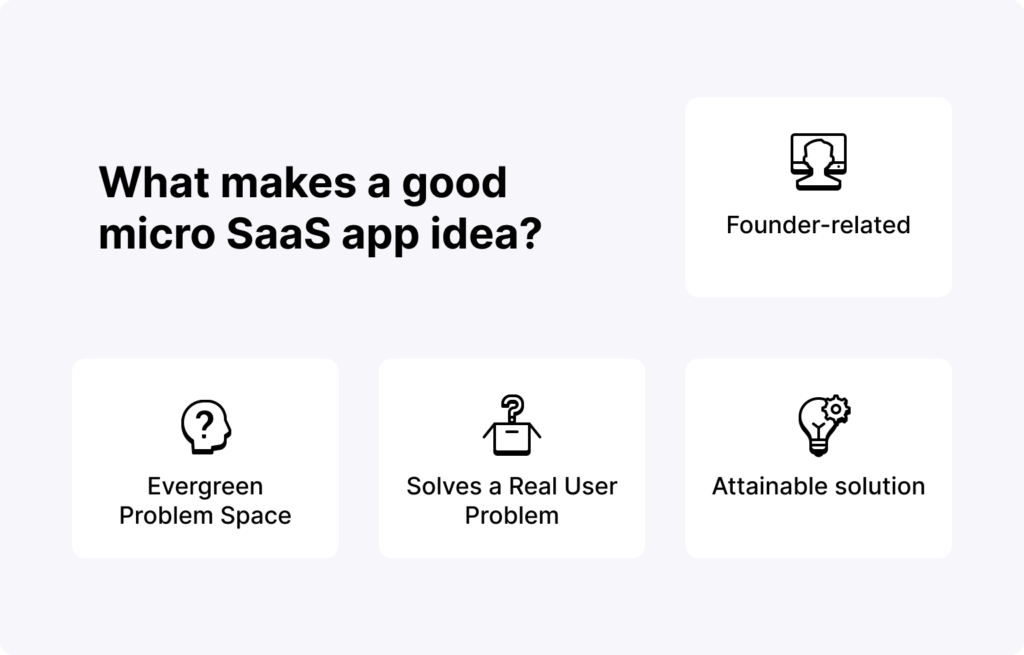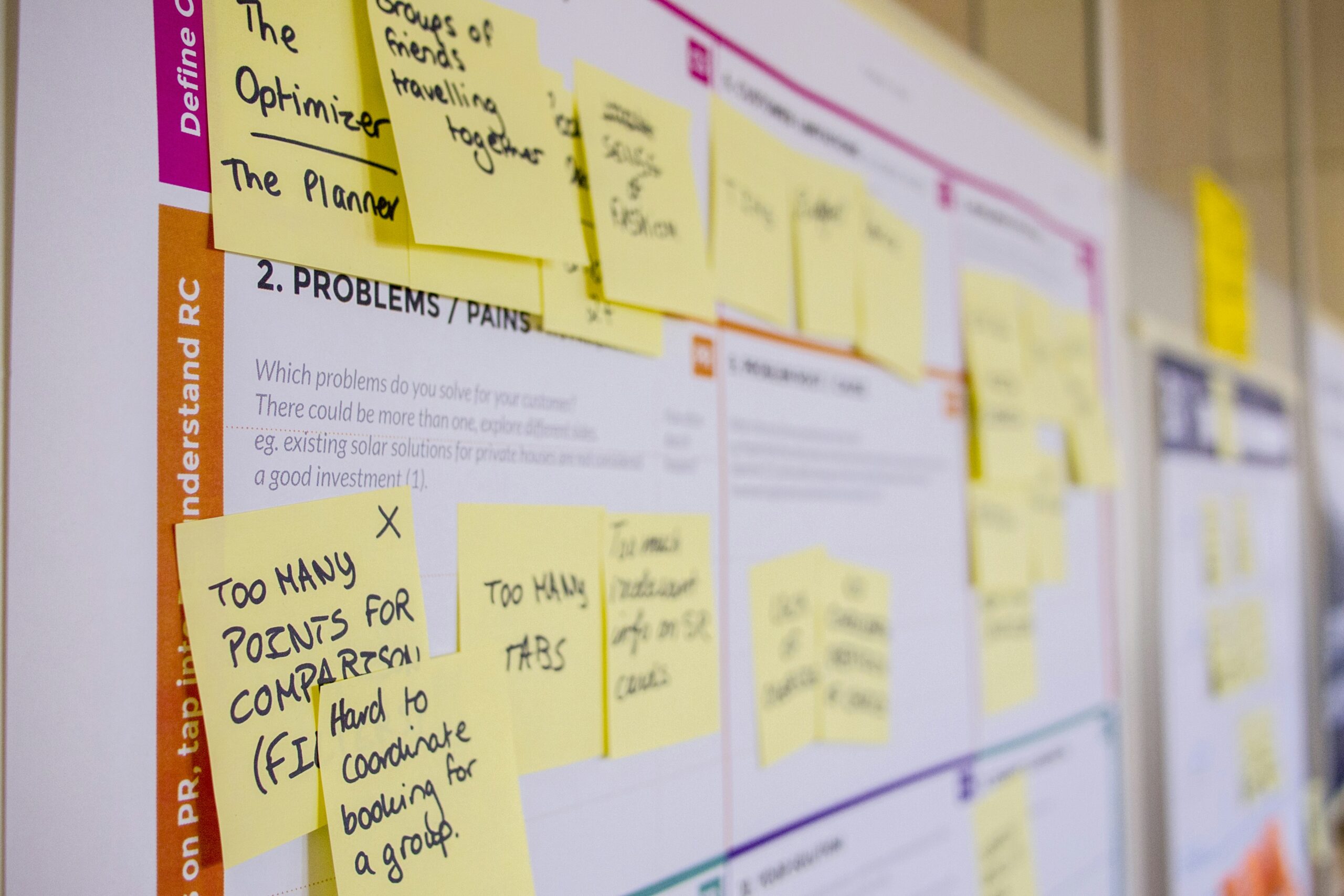Have you wondered how solo founders and small teams build profitable online businesses with no outside funding?
A Micro SaaS startup allows that.
By identifying underserved niches and using product-led growth to scale revenue, you can build a profitable product.
In this guide, I’ll show you how Micro SaaS works and give actionable advice for turning an idea into a highly profitable recurring revenue business.
First, let’s understand what micro SaaS is.
What is Micro SaaS?
Micro SaaS refers to a software business model where you build a small, niche application and sell it to many customers on a subscription basis.
Compared to traditional SaaS, a micro SaaS has:
- A small market
- A simpler app
- Lower startup costs
- Fewer features
Micro SaaS businesses are highly profitable because income scales rapidly with more customers without significantly more overheads once the app is built.
Micro SaaS vs SaaS
Let’s examine examples to understand the difference between micro SaaS and SaaS businesses:
- Micro SaaS Apps
- Browser extensions like Grammarly
- Web apps like ConvertKit’s email marketing app
- Platform-specific ecosystem apps like a Shopify app
- SaaS Apps
- CRMs like Salesforce.
- Email marketing platforms like MailChimp
- Project management tools such as Asana
Micro SaaS apps serve a niche audience, while SaaS tools cater to a broader market.
This focus makes it simpler to build micro SaaS apps, resulting in lower startup costs.
But don’t be fooled by the “micro” name. A micro SaaS business can generate significant recurring revenue with the right marketing.
Benefits of Starting a Micro SaaS Business
Building a profitable micro SaaS has many advantages:
Compounding Results from Your Efforts
Once your app is built, income scales rapidly through customer acquisition without needing more work.
Predictable Income
Subscription revenue yields stable, predictable income, unlike one-time purchases.
Minimal Startup Costs
Micro SaaS businesses have lower initial costs compared to traditional SaaS products, with no need for millions in funding to get started.
Direct Connection With Users
Your niche target market allows you to understand customer challenges and build relationships.
Build Once, Sell To Many
Your app can serve thousands of paying subscribers without major additional coding.
Time freedom
By systemizing processes, your business can run without your day-to-day involvement.
Location Freedom
You can manage your micro SaaS business from anywhere with an internet connection.
Technical freedom
Own and control the technology instead of depending on someone else’s platform.
Financial Freedom
Recurring revenue covers living expenses and funds further growth.
Self-Owned Business
You make all the decisions and keep all the profits without answering to investors or shareholders.
There are many excellent reasons to start your own niche software business.

Challenges of Building a Micro SaaS
Micro SaaS comes with its challenges. Here are some common pitfalls to avoid:
- Building an app without validating your idea
- Creating an app that tries to serve everyone is not effective.
- Lacking skills/experience to build or market the product.
- Lack of startup capital for early phases
- Scaling customer support is crucial as a business grows.
Careful planning is essential for a successful micro SaaS venture.
How to Find the Right Micro SaaS Niche
Choosing the right niche is crucial, so let’s explore further.
Your niche should attract users with a budget for tools.
Target users with money to invest in solutions to improve their business processes.
For example, freelancers, agencies, consultants, software companies.
B2B or B2C?
B2B micro SaaS businesses have a higher willingness to pay than B2C apps. However, B2C allows you to target a larger market.
When choosing between B2B or B2C, evaluate your interests and skills.
User Characteristics
Choose an audience you enjoy working with because you’ll be spending lots of time with them.
Specific & Focused
Avoid broad niches and compete with big players. Go narrow to dominate.
Build an app for freelance designers to manage client projects rather than using project management software.
What makes a good micro SaaS app idea?
Key factors that set successful micro SaaS apart:
Solves a Real User Problem
Analyze the problems and unmet needs of your target niche. Build features that directly help them.
Founder-related
Use your background and experiences. Draw upon the problems you’ve faced or the industries you know.
Evergreen Problem Space
Choose ongoing issues that affect your niche rather than temporary trends.
Attainable solution
The MVP version of your idea must be within your skill sets to build initially.

How to Generate Micro SaaS App Ideas
Here’s a process to come up with niche software solutions:
Identify problems in your niche.
- Their biggest pain points.
- Where are they wasting effort due to poor processes?
- What are the most common complaints?
Narrow Down the Most Promising Issues
- Which problems need better solutions urgently?
- What problems result in huge costs if left unfixed?
- Which problems affect the most people?
Validate These Problems
This saves effort in solving invented issues. Use surveys, interviews, and online discussions to verify real users face these problems.
Define and evaluate solutions
Brainstorm features and interfaces to solve customer problems.
Assess demand, feasibility, competitors, and potential value. Choose the best for your first app.
This structured idea-generation process prevents wasting time on useless software.

Validating Your Micro SaaS App Idea
Before coding, validate your app’s core assumptions:
- The problem exists.
- Users need a solution.
- Customers will pay for your solution.
Validation Methods
- Search online for niche discussions about common problems.
- Interview customers
- Create a landing page to clearly describe features, pricing, and gauge interest.
- Offer a free limited trial of your basic MVP app.
Aim for at least 50 prospects to sign up on a waitlist or beta test your MVP before committing to full app development.
How to Build and Launch Your Micro SaaS App
Once validated, it’s time to start building! Here are the key steps successful founders take:
Start small, dream big.
Keep the initial MVP simple and have a powerful long-term vision to share publicly.
Commit to Regular Educational Content
Blogging and social media establish you as an authority, driving organic growth in the long term.
Treat Early Adopters Like VIPs
Customers take a risk on your unproven solution. Reward them with premium support and exclusive upgrades. Their reviews, testimonials, and referrals are crucial.
Plan how to scale from day 1.
Architect your data, code, pricing, and support channels for high growth from the start. Retrofitting key app foundations later can be challenging.
With this advice, you’ll be on your way to Micro SaaS success as a part-time endeavor or full-time business.

How to Buy or Sell a Micro-SaaS Business
As your micro-SaaS grows, you may consider selling it to move on to new projects. Buying an existing micro-SaaS can help you skip the risky early stages.
Let’s explore both options:
Why sell your micro-SaaS business?
Here are the common reasons founders sell SaaS companies:
- Cash out after years of effort to realize your returns.
- Find business ideas you’re passionate about.
- Exit day-to-day work but keep a share of future growth
- Take advantage of strong valuations for niche software companies.
- Sell to a strategic acquirer who can rapidly scale your user base.
Valuing a Micro-SaaS Company
As the founder, you feel your business is invaluable, but appraising the fair market value depends on metrics like:
- Annual recurring revenue
- Gross margins
- Customer churn rates
- Recover CAC
- Growth rates over time
- Access to code, data, and accounts
Profitable and growing micro-SaaS companies sell for 24-36x their monthly recurring revenues.
Companies that grow faster in hot niches with recurring revenue models that retain customers for years sell for higher multiples.
Aim for these factors if you want the highest valuation:
- Low churn
- Expanding margins
- Predictable growth
- Onboarding productized
- Organic traffic sources
- Established authority
With the right pillars in place, selling your micro-SaaS for millions is achievable within 2-5 years from founding.
Why buy an existing Micro-SaaS?
Why acquire a niche SaaS business instead of starting from scratch:
- Start making money right away instead of waiting for an uncertain launch.
- Gain existing customers instead of converting trials slowly.
- Use niche authority content to drive traffic.
- Product-market fit reduces the risk of inadequate validations [CITATION NEEDED].
- Operational processes are established for smooth scaling.
- Tap into existing affiliate networks.
- Foundational metrics such as SEO, reviews, and retention are complete.
Buying the right micro-SaaS allows you to quickly start on growth instead of risky, capital-intensive early phases.
Do extensive due diligence on revenues, churn, costs, and tech stack before acquiring an online business.
This advice will help you plan for exiting your micro-SaaS through a strategic sale or to fund your next venture. Let me know if you have any other questions!
Successful Micro SaaS Founders
We’ve covered conceptual advice for starting a micro SaaS business, but real-world examples powerfully drive home insights.
Here are a few case studies of micro SaaS founders who have built highly successful seven- and eight-figure businesses:
- Nathan Barry turned ConvertKit from a solo side project into an eight-figure company serving over 25,000 creators by focusing on delivering an amazing email marketing experience.
- Josh Pigford found a niche in B2B payments and scaled Baremetrics into a $4 million ARR business before selling it.
- Syed Balkhi has built a portfolio of niche SaaS brands targeting WordPress site owners, including OptinMonster, WPBeginner, MonsterInsights, and Awario.
While these founders took different paths, commonalities in their approaches include identifying underserved niches, building great products through constant customer feedback, content marketing funnels, lean but powerful teams, and providing best-in-class support.
You can extract lessons to apply in your own micro SaaS pursuits by studying their journeys and tactics.
Finishing up
Building a successful bootstrapped micro SaaS business requires immense grit, perseverance, and commitment.
Effort and sacrifice will be poured into your pursuits.
Micro SaaS represents a proven business model for entrepreneurial independence and financial freedom by focusing on validating ideas, delighting niche audiences, providing value and support, building processes, and putting systems in place to amplify growth.
I hope this guide has provided extensive resources and actionable insights for starting and scaling micro SaaS businesses.
No guide or advice can replace real-world experience.
Get out there, build something great, make mistakes fast, iterate constantly, and achieve your dreams progressively!
FAQs
What skills do I need to start a micro SaaS?
To start a micro SaaS, you need skills in business analysis, programming, design, marketing, and customer support. Many successful solo founders are full stack developers who can build the initial product themselves. If you lack technical skills, you’ll need a co-founder or contractor. Expertise in your niche industry is also very helpful to understand user needs.
How much does it cost to start a micro SaaS?
A micro SaaS can be started for less than $5000 in many cases. The main costs are web hosting, a domain name, business registration, a basic logo, and any contractor fees if you outsource development. Many successful founders start as a side business and bootstrap costs from their day job income. Ongoing costs are marketing, customer support, and further development.
How long does it take to build and launch a micro SaaS MVP?
An initial “minimum viable product” version of a micro SaaS can be built and launched in 1-3 months in most cases. The key is to focus on the core functionality that solves the main user problem and provides value. Additional features can be added later after getting customer feedback on the MVP. Properly validating the idea upfront ensures you build something users want. The launch process also includes setting up a website, payments, onboarding flows, and marketing.



